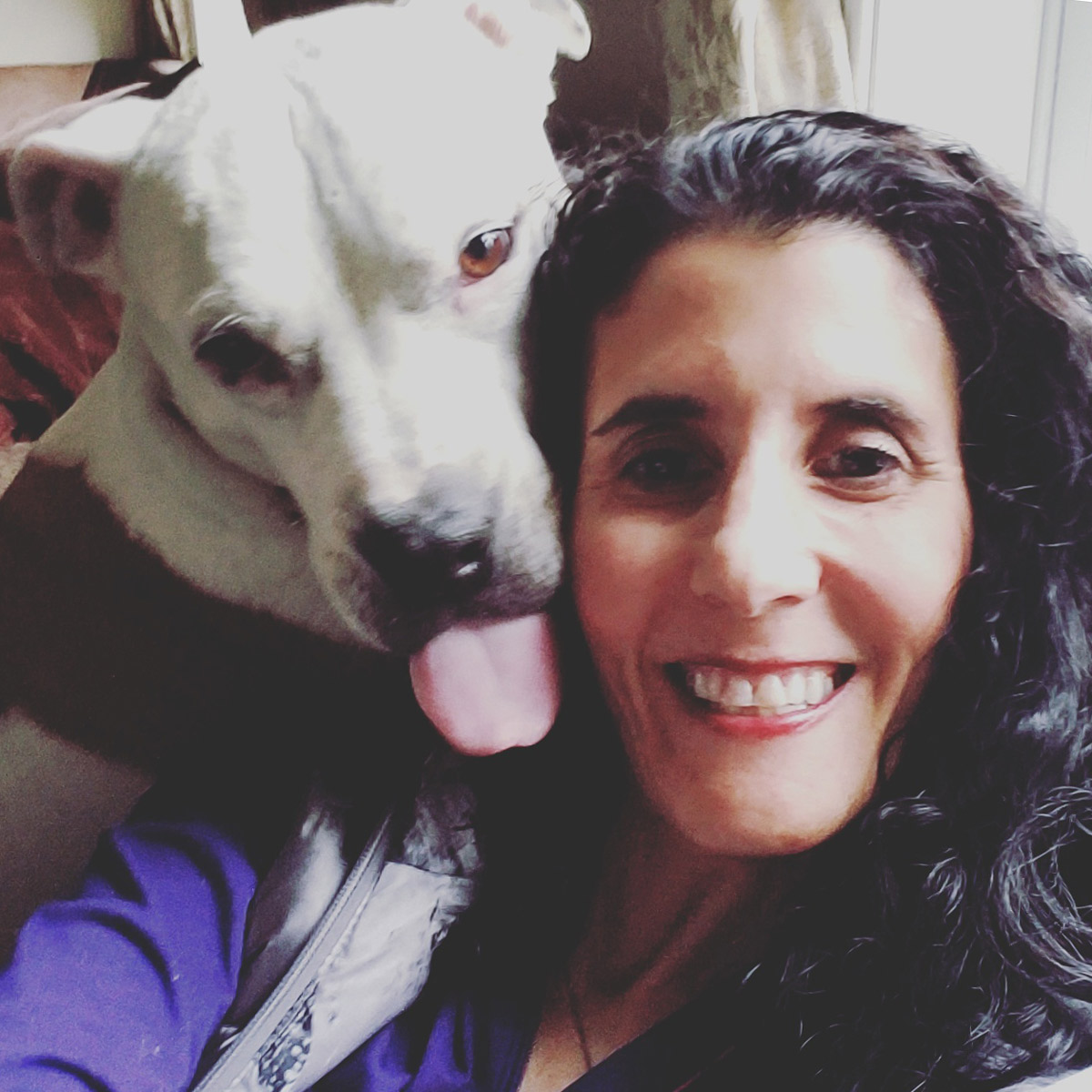
Signs of Dog Allergies, Their Causes, and How to Treat Them
Key takeaways:
Dogs can have allergies to a variety of things, like pollen, fleas, and food.
Dogs with allergies typically have itchy, irritated skin and issues caused by infections from scratching.
Several treatment options are available, including medications, shampoo therapy, and allergy shots.
Access savings on related medications
Table of contents

No pet parent likes watching their canine companion suffer. But allergies don’t just get under our skin — they can get under our dogs’ skin too.
Like people, dogs can react to various allergens, such as airborne materials, fleas, and food. Symptoms may vary, depending on the trigger. But most often, a dog with allergies will have itchy, irritated skin. This skin condition is called atopic dermatitis, or atopy.
Below, we look at common dog allergies, symptoms, and treatment options.
Save on the top 10 pet medications
Save big on common pet medications like Fluoxetine and Levetiracetam at your local pharmacy.

GoodRx is NOT insurance. GoodRx Health information and resources are reviewed by our editorial staff with medical and healthcare policy and pricing experience. See our editorial policy for more detail. We also provide access to services offered by GoodRx and our partners when we think these services might be useful to our visitors. We may receive compensation when a user decides to leverage these services, but making them available does not influence the medical content our editorial staff provides.
What are the most common types of dog allergies?
The most common types of dog allergies are seasonal and flea. Some dogs also react to certain foods, but food allergies are rare in dogs.
Seasonal allergies
Seasonal allergies in dogs often occur during human allergy season (spring, summer, and fall). But they can also affect your pet year-round. Dogs with seasonal allergies react to airborne triggers, such as pollens from trees, grasses, and ragweed. Typical symptoms include itchy, irritated skin and hives.
Flea allergies
Fleas are a common source of allergic reactions in dogs. Fleas are tiny insects that feed on animal blood and inject saliva into animals. Most dogs are allergic to flea saliva, but some dogs are more sensitive than others. A dog with a flea allergy will scratch, lick, and chew their skin repeatedly to get relief.
Food allergies
Food allergies are rare in dogs. But some pups react to ingredients in dog food, such as chicken, turkey, and corn. Symptoms include:
Abdominal pain
Itchy skin
Food allergies in dogs are treated with novel proteins or a hydrolyzed diet.
Novel proteins: A novel protein diet introduces your dog to a protein and carbohydrate your pup has never eaten, such as rabbit and potato or duck and oats.
Hydrolyzed diets: The process of hydrolysis changes the molecular structure of common dog-food ingredients, like chicken or turkey. These molecular changes keep your dog’s body from recognizing the allergen, preventing reactions.
Relief for itchy eyes: Allergies can cause your dog’s eyes to become red and irritated. Eye drops can help. Learn more about the best allergy eye drops for dogs.
Dog food alternatives: A dog with food allergies may need a novel protein or hydrolyzed diet. Read about these special diets for dogs.
Flea treatments: Flea medications come in oral, topical, and collar forms. Find out which flea treatment is right for your dog.
What are the symptoms of allergies in dogs?
Allergy symptoms vary depending on what your dog is allergic to. Common dog allergy symptoms include the following.
1. Scratching
Allergies cause itchy skin in dogs. That’s why many dogs repeatedly scratch their skin or fur. Dogs with allergies who scratch themselves a lot can experience hair loss and excess shedding.
2. Chewing and licking their skin
The itchiness might also cause dogs with allergies to chew or lick their skin. This behavior can include biting at their skin, licking their paws, and licking their anal glands.
Read more like this
Explore these related articles, suggested for readers like you.
3. Red, inflamed, and infected skin
Dogs who scratch and chew their skin because of allergies might experience red and inflamed skin as a result. Sometimes discoloration and thick elephant-like skin can develop as well.
4. Hives
Hives can develop within a few minutes to several hours after your dog is exposed to the offending allergen.
5. Hot spots
Constant scratching can lead to infections, such as hot spots. Hot spots often look moist and red. Some might develop pus and increase in size.
6. Chronic ear infection
The skin isn’t the only area that can be affected by allergies. They can also affect a dog’s ears. Many dogs with allergies experience long-lasting ear infections.
7. Ear irritation
Your dog’s ears might become red, waxy, smelly, and inflamed. The infection can cause your dog to shake their head.
8. Rubbing their face
Some dogs with allergies rub their faces with their paws or on objects such as furniture to relieve itchiness. They might also scoot their butt against the floor or carpet.
9. Sneezing more than usual
In a small percentage of dogs, allergies can affect the inside of their nose. Allergies can cause asthma or rhinitis for these dogs, which causes inflammation in the nose. Signs of rhinitis due to allergies include sneezing, nasal discharge, and labored breathing.
10. Puffy eyes or eye discharge
Dogs can also have allergy symptoms in their eyes. They may develop red, puffy eyes or discharge.
How do you treat allergies in dogs?
There are several treatments available to control allergy symptoms in dogs. Most treatments address skin itching and irritation. We’ll cover your dog’s options below. Work with a veterinarian to decide the best treatment plan for your dog.
Avoid allergens
The best treatment for allergies is avoiding allergens when possible. But this might not be the perfect solution for your dog. Pollen and other airborne allergens can travel in the air for miles.
But there are some things you can do to limit allergen exposure in your home:
Wash your dog’s bedding weekly in hot, soapy water. Dry on a hot dryer cycle to kill dust mites.
Frequently vacuum soft surfaces, such as carpeting and couches.
Mop hardwood and linoleum flooring, and wash area rugs weekly.
Use a vacuum cleaner with a HEPA filter.
If possible, use air-conditioning rather than opening windows during pollen season.
Give your dog hard, washable chew toys rather than plush toys.
If plush toys are their favorite, wash them weekly in hot, soapy water.
Use air conditioners set on recirculation mode to cut down on humidity.
Use dehumidifiers to prevent mold in bathrooms, kitchens, and other damp spots.
Apoquel
Apoquel (oclacitinib) is a medication for dogs used to control itchy skin due to allergies. It can reduce itching within 4 to 48 hours.
Apoquel is given orally as a tablet or a chewable. It’s usually given twice a day for 2 weeks with or without food. Then your veterinarian will help you find a long-term maintenance dosage for your dog.
Apoquel is not recommended for dogs younger than 1 year old or who have cancer or demodectic mange. Potential side effects of Apoquel include:
Vomiting
Diarrhea
Fatigue
These side effects are usually mild. They can often be reduced by giving Apoquel with food.
For some dogs with severe allergies, Apoquel may not work well enough on its own. These dogs might need other treatments along with Apoquel.
Anti-inflammatory steroids
Treatment with steroid medications can effectively block the allergic reaction and stop the itch. Your veterinarian may prescribe medications, including:
There can be side effects associated with steroids. Side effects may be more likely with higher doses or long-term use of these medications.
Some side effects include:
Extreme hunger
Extreme thirst
Weakened immune system
Blood sugar increase
Infections, particularly upper respiratory tract and urinary tract infections
The goal is to use other treatments with steroids to lessen or eliminate the need for steroid medications.
Omega-3 fatty acid supplements can improve the response to steroids in some dogs. In some cases, omega-3 supplements can stop the skin from producing inflammatory chemicals. Supplementing with omega-3s can lower the steroid dose needed to control symptoms.
Allergy shots
Allergy shots — or allergen-specific immunotherapy — can be very effective for dogs with environmental allergies. Allergy shots focus on retraining your dog’s immune system. This treatment is a good choice for dogs who haven’t responded well to other therapies. It tends to work better in younger dogs.
Before beginning this treatment, your dog must be allergy tested by a veterinary dermatologist to find which allergens cause a reaction. A veterinarian then creates a custom allergy shot for your dog. You or a vet injects your dog with gradually higher doses until they reach a maintenance dose.
Treatment with allergy shots requires a long-term commitment from the owner. Additionally, allergy shots are not a quick fix. Most dogs don’t see improvement until 6 months to 1 year.
Antihistamine treatment
Antihistamine medications block allergy symptoms. Examples of antihistamines used to treat dog allergies include:
Clemastine (Tavist)
Trimeprazine (Temaril-P, Vanectyl-P)
Diphenhydramine (Benadryl)
These medications are widely used. They are not as effective as other treatments in providing short- or long-term relief. But they may offer some relief when used with other therapies.
Shampoo therapy
Bathing your dog with a hypoallergenic shampoo can soothe their inflamed skin. Bathing and wiping down their coat and skin often also washes out allergens your dog may pick up.
Ask a veterinarian for recommendations on which shampoo to buy. Some are available over the counter, while others require a prescription. A vet can also tell you how often to bathe your dog. The recommendations may vary by breed and skin type.
Flea prevention
The best way to manage flea allergies in dogs is to prevent them. There are three types of flea preventives available for dogs: oral, topical, and collar.
Oral: Oral medications for fleas in dogs are available as a pill or a chewable tablet. Brands like Capstar and Nexgard are given once a month. Bravecto is given every 3 months. Oral preventives are available only with a prescription.
Topical: Topical preventives, such as Advantage Multi, Frontline, and Revolution, are applied directly to your dog’s skin once a month. Bravecto’s topical solution is applied every 3 months. Several topical flea medications are available over the counter.
Collar: If oral or topical flea medications don’t work for your dog, try a flea collar. The older ones aren’t very effective. But a newer one, Seresto, can keep fleas away for up to 8 months. Other options include Preventic and Scalibor. Flea collars are available over the counter.
Frequently asked questions
Although Benadryl is not FDA approved for animal use, it’s generally safe to give a dog Benadryl. But first talk to a veterinarian about an appropriate dosage and possible interactions. Giving your dog too much Benadryl can hurt them, as with many human medications.
It’s best to see a veterinarian if your dog shows any signs of allergies. Some common signs include:
Appearing itchy
Getting repeated ear infections
Having inflamed, red, or irritated skin
Yes. It’s possible for dogs to be allergic to cats. An allergy to cats will cause itchy skin. It’s best to get your dog tested by a dermatologist to know for sure. A veterinarian will recommend treatment based on your dog’s needs. You can help your dog feel more comfortable by vacuuming your home often and using an air purifier to remove cat dander.
The bottom line
Like humans, dogs can react to fleas as well as seasonal allergens, such as plant pollens.
These allergens enter the dog’s body through the skin. So dogs often have skin inflammation, itching, and scratching. Some dogs can also react to ingredients in dog food, like chicken or corn. Symptoms of dog allergies to food include skin irritation, digestive problems, and respiratory issues.
Many treatments are available for dog allergies, including steroids, allergy shots, and the medication Apoquel. For dog allergies to fleas, prevention with ongoing flea medication is the best strategy. The sooner dog allergies are addressed, the better the chance of reducing your dog’s symptoms. If you think your dog has allergies, make an appointment with a veterinarian so you can discuss treatment options.
Why trust our experts?



References
Asthma and Allergy Foundation of America. (2015). How can I control indoor allergens and improve indoor air quality?
Beers, H. (2017). Allergy shots may bring relief to itchy dogs. University of Illinois Urbana-Champaign College of Veterinary Medicine.
Bond, R., et al. (1994). Combined treatment with concentrated essential fatty acids and prednisolone in the management of canine atopy. Veterinary Record.
Brooks, W. (2023). Allergies: Atopic dermatitis in dogs and cats. Veterinary Partner.
Brooks, W. (2023). Diphenhydramine (Benadryl, Vetadryl, Banophen, Diphenhist). Veterinary Partner.
Brooks, W. (2023). Oclacitinib maleate (Apoquel). Veterinary Partner.
Carlotti, D.-N. (2004). Shampoo therapy in veterinary dermatology. World Small Animal Veterinary Association World Congress Proceedings.
Cornell Richard P. Riney Canine Health Center. (n.d.). Itchy ear problems. Cornell University College of Veterinary Medicine.
DeBoer, D. J., et al. (2017). The future of immunotherapy for canine atopic dermatitis: A review. Veterinary Dermatology.
Dryden, M. W., et al. (2024). Fleas of dogs. Merck Veterinary Manual.
Jensen-Jarolim, E., et al. (2015). Pollen allergies in humans and their dogs, cats and horses: Differences and similarities. Clinical and Translational Allergy.
Johnson, T. (2021). Allergic conjunctivitis in dogs and cats. Veterinary Partner.
Khan, S. A. (2025). Poisoning from human over-the-counter drugs. Merck Veterinary Manual.
Kuehn, N. F., et al. (2024). Rhinitis and sinusitis in dogs. Merck Veterinary Manual.
Long, S. (2020). Managing atopic dermatitis in dogs: Are antihistamines as effective as glucocorticoids? Veterinary Evidence.
Lotz, K. (2018). Can dogs be allergic to cats? American Kennel Club.
Lundgren, B. (2016). Hot spots in dogs and cats. Veterinary Partner.
The VIN Dermatology Consultants. (2025). Atopic dermatitis in dogs. Veterinary Partner.
VINx. (2021). Seresto fact sheet for clients. Veterinary Partner.
White, S. D., et al. (2024). Allergies in dogs. Merck Veterinary Manual.
White, S. D., et al. (2024). Hives and rashes (urticaria) in dogs. Merck Veterinary Manual.





























